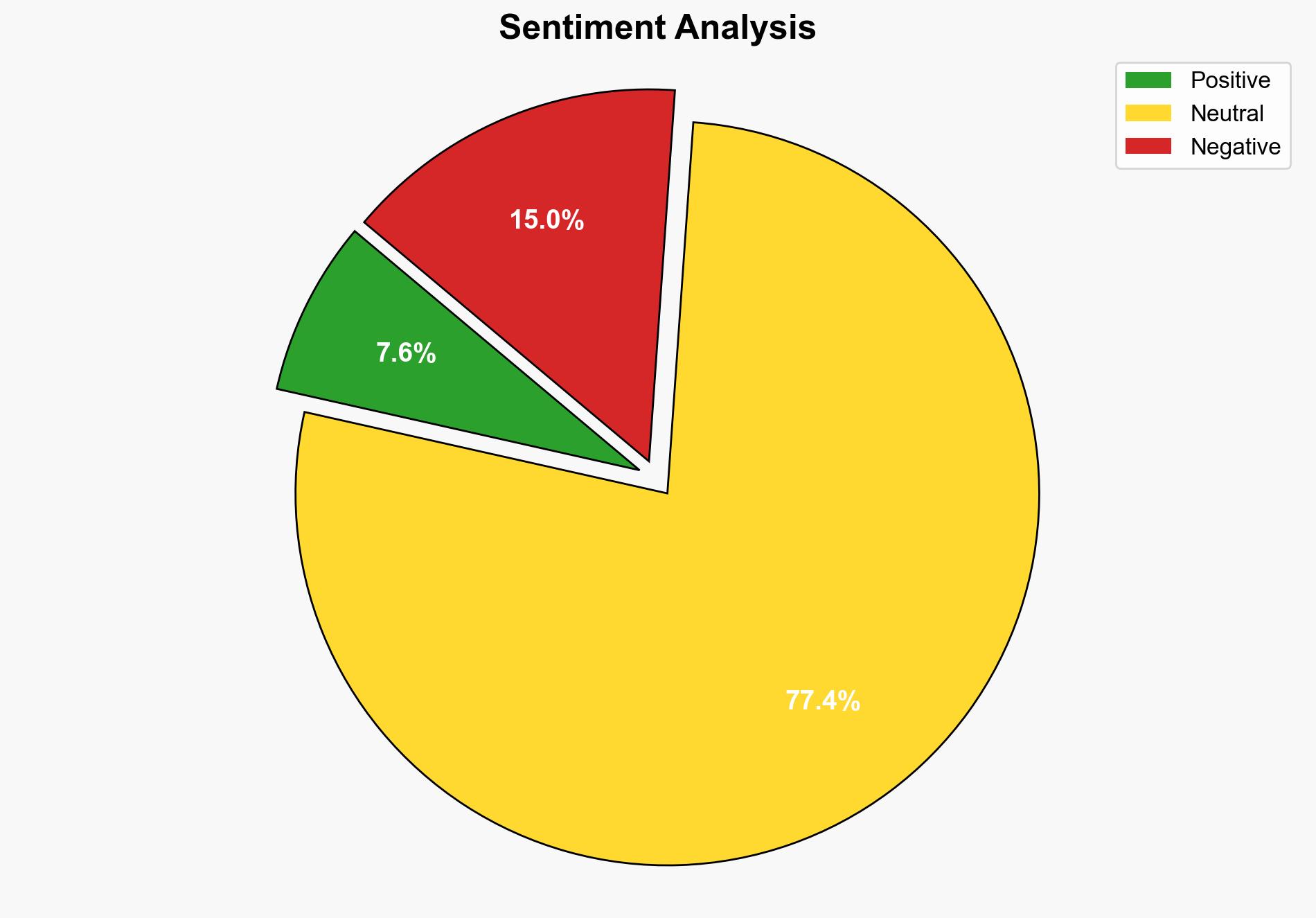Iran Throttles Nightly Water Pressure in Tehran Due to Brutal Drought Denies Rationing – Breitbart News
Published on: 2025-11-11
AI-powered OSINT brief from verified open sources. Automated NLP signal extraction with human verification. See our Methodology and Why WorldWideWatchers.
Intelligence Report: Iran Throttles Nightly Water Pressure in Tehran Due to Brutal Drought Denies Rationing – Breitbart News
1. BLUF (Bottom Line Up Front)
With a moderate confidence level, it is assessed that Iran is likely implementing water rationing measures under the guise of “pressure management” due to severe drought conditions and mismanagement of water resources. Strategic recommendations include monitoring for potential civil unrest and considering diplomatic engagement to address water management issues.
2. Competing Hypotheses
Hypothesis 1: Iran is genuinely reducing water pressure as a management tool to prevent urban leakage and replenish reservoirs, without formal rationing.
Hypothesis 2: Iran is effectively implementing water rationing under the pretense of pressure management to avoid public backlash and maintain control over the narrative.
Assessment: Hypothesis 2 is more likely given the context of severe drought, historical mismanagement, and the regime’s tendency to control public perception. The evidence of reduced water availability and the strategic language used by officials supports this interpretation.
3. Key Assumptions and Red Flags
Assumptions: It is assumed that the Iranian government has the technical capability to manage water distribution effectively and that public statements reflect strategic intent rather than operational reality.
Red Flags: The lack of transparency and the regime’s history of controlling information suggest potential deception. The emphasis on “pressure management” without acknowledging rationing is a significant indicator.
4. Implications and Strategic Risks
Political: Potential for civil unrest as citizens experience water shortages, exacerbating existing anti-regime sentiments.
Economic: Water scarcity could impact agriculture and industry, leading to economic strain.
Informational: The regime’s narrative control could lead to misinformation and further distrust among the populace.
5. Recommendations and Outlook
- Monitor social media and local reports for signs of unrest or protests related to water shortages.
- Engage with international bodies to offer technical support for water management and infrastructure improvement.
- Best Case: Iran acknowledges the crisis and seeks international assistance, leading to improved water management.
- Worst Case: Escalation of civil unrest and potential regime crackdowns, further destabilizing the region.
- Most Likely: Continued water pressure reductions with sporadic public discontent, but no significant policy change.
6. Key Individuals and Entities
Masoud Pezeshkian, Ayatollah Ali Khamenei, Reza Hajikarim, Abbas Aliabadi, National Council of Resistance of Iran (NCRI).
7. Thematic Tags
Regional Focus: Middle East, Water Management, Civil Unrest, Government Policy
Structured Analytic Techniques Applied
- Causal Layered Analysis (CLA): Analyze events across surface happenings, systems, worldviews, and myths.
- Cross-Impact Simulation: Model ripple effects across neighboring states, conflicts, or economic dependencies.
- Scenario Generation: Explore divergent futures under varying assumptions to identify plausible paths.
- Network Influence Mapping: Map influence relationships to assess actor impact.
Explore more:
Regional Focus Briefs ·
Daily Summary ·
Methodology





